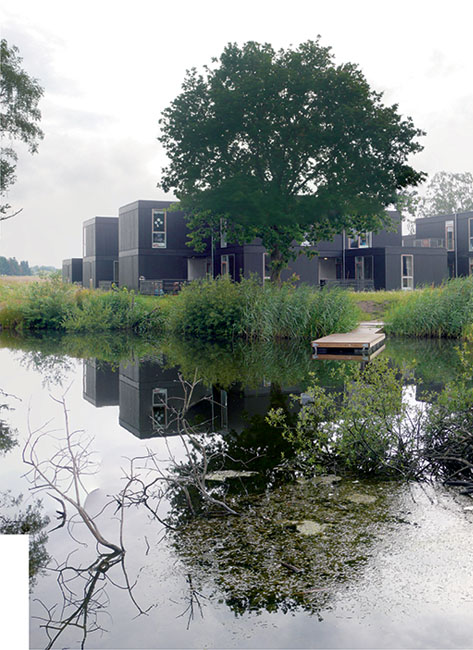Kvistgårdhusene Kvistgård Tegnestuen Vandkunsten
Abstract
In 2004 Tegnestuen Vandkunsten architects won a closed architectural competition, organized by the Danish developer BBB – Bedre Billigere Boliger (Better Cheaper Housing). BBB intended this competition to stimulate the development of new housing solutions that combined cheap and efficient construction methods with contemporary comfort and an interesting environment. The designated location was a pentagonal piece of land around a small pond, on the edge of the village of Kvistgård, to the southwest of the city of Helsingør.
Vandkunsten’s solution combined savings in every phase of the construction process with the spatial quality of tæt-lav building, a typically Danish model consisting of groundbased dwellings, each with a small private garden around a communal area. This has been a common model in Danish house building since around 1970, when the Statens Byggeforskningsinstitut (Danish National Institute for Building Research) organized a competition to design a new type of building development that was to be both dense (tæt) and low (lav).
At Kvistgård clusters of dwellings were set in the gently rolling landscape in strict geometric configurations. Each cluster comprises nine dwellings arranged in a rectangle around a communal inner area. One corner of the rectangle is left open to accommodate nine cars and rubbish storage. A long, winding access road connects the clusters with each other and to secondary roads. A footpath leads to the nearby train station.
The dwellings vary in size from 81 to 163 m2 (net) and are assembled from 5.2 x 5.2 m prefabricated wooden modules. On a footprint of more than 10 x 10 m, each dwelling has a living room and kitchen module with built-in lavatory/ bathroom cubicle, a private garden module and an entrance module comprising a covered outside space with outdoor storage opposite the entrance. The covered outside areas form narrow openings in the building which can be accessed from both the exterior and interior space. Supplementary modules on the first floor accommodate bedrooms, play or office space, an extra lavatory/bathroom cubicle or a roof terrace.
In the largest dwelling type one first-floor module is suspended outside the footprint and thus covers access to the communal inner area. These accesses and the narrow views through to the inner areas at the individual house entrances create a continual visual interaction between the private and collective domains of each cluster and the larger scale of the surrounding landscape.
Each inner area is uniform and simply laid out: a strip of loose-fill surfacing along the rear walls surrounds a rectangular lawn, with sometimes a fruit tree. The designers assume that over time these areas will begin to differ from each other as each group of residents arranges them to their taste. A natural landscape of tall grass and wild flowers between the various residential clusters provides an even greater contrast.



